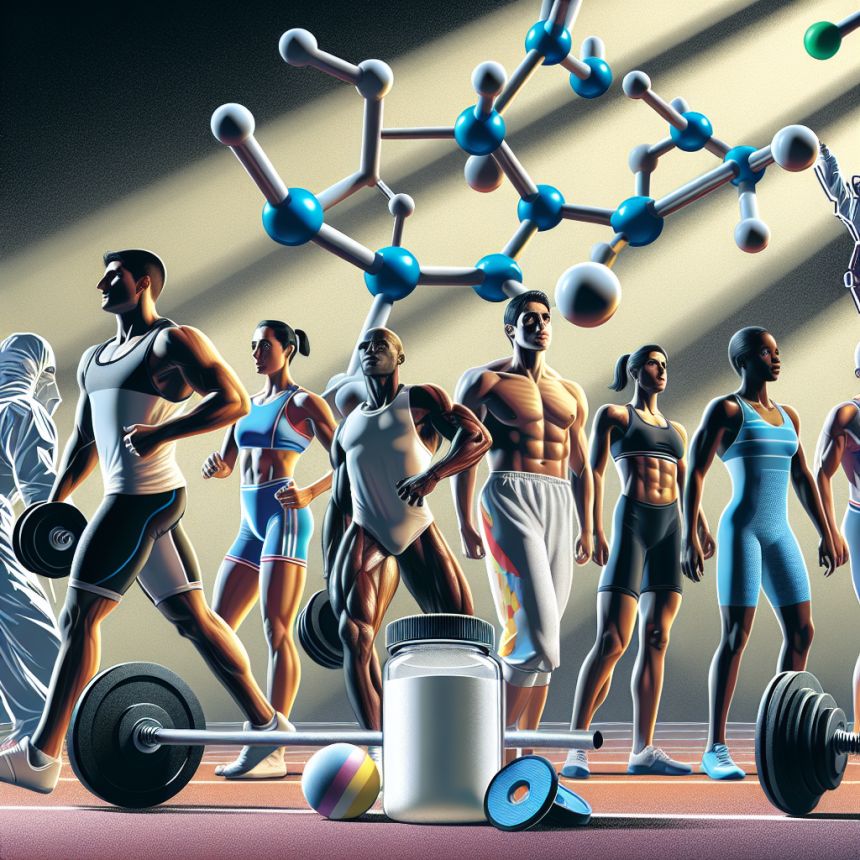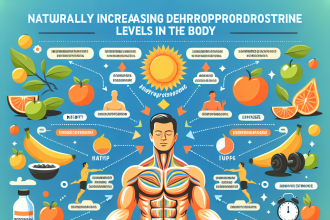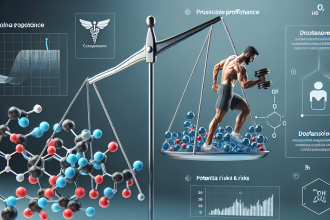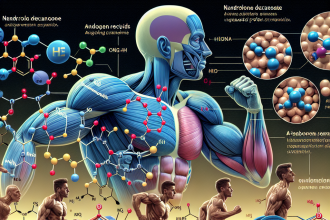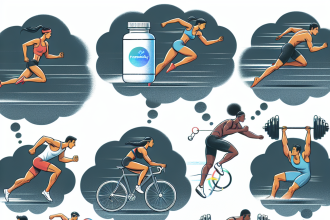-
Table of Contents
Delving Deep into the World of Nandrolone in Sports
Sports and performance-enhancing drugs (PEDs) have been intertwined for decades. Athletes are constantly seeking ways to gain a competitive edge and PEDs have been a controversial topic in the world of sports. One of the most commonly used PEDs is nandrolone, a synthetic anabolic steroid. In this article, we will delve deep into the world of nandrolone in sports, exploring its pharmacokinetics, pharmacodynamics, and its impact on athletic performance.
The Basics of Nandrolone
Nandrolone is a synthetic derivative of testosterone, the primary male sex hormone. It was first developed in the 1950s and has been used for various medical purposes, including treating anemia, osteoporosis, and wasting diseases. However, it is most commonly used in sports for its anabolic effects, which promote muscle growth and strength.
Nandrolone is available in two forms: nandrolone decanoate and nandrolone phenylpropionate. The decanoate form has a longer half-life and is typically used for long-term treatment, while the phenylpropionate form has a shorter half-life and is more commonly used for athletic purposes.
Pharmacokinetics of Nandrolone
When nandrolone is administered, it is rapidly absorbed into the bloodstream and reaches peak levels within 2-3 days. It is then metabolized in the liver and excreted in the urine. The half-life of nandrolone decanoate is approximately 6-8 days, while the half-life of nandrolone phenylpropionate is around 4-5 days.
One of the unique characteristics of nandrolone is its ability to be converted into dihydrotestosterone (DHT) in the body. DHT is a more potent androgen than testosterone and is responsible for many of the androgenic effects of nandrolone, such as increased facial and body hair growth.
Pharmacodynamics of Nandrolone
Nandrolone exerts its effects by binding to androgen receptors in the body, which are found in various tissues, including muscle, bone, and the central nervous system. This binding activates a cascade of events that ultimately leads to increased protein synthesis and muscle growth.
In addition to its anabolic effects, nandrolone also has some androgenic effects, such as increased sebum production and potential for hair loss. However, these effects are less pronounced compared to other anabolic steroids, making nandrolone a popular choice among athletes.
Nandrolone in Sports
Nandrolone has been banned by most sports organizations, including the International Olympic Committee (IOC) and the World Anti-Doping Agency (WADA). Its use is considered cheating and can result in severe penalties, including disqualification and suspension from competition.
Despite its ban, nandrolone continues to be used by athletes in various sports, including bodybuilding, weightlifting, and track and field. It is often used in combination with other PEDs to enhance its effects and mask its use during drug testing.
One of the main reasons for the popularity of nandrolone in sports is its ability to increase muscle mass and strength. Studies have shown that nandrolone can increase lean body mass and muscle strength in both trained and untrained individuals (Kouri et al. 1995). This makes it an attractive option for athletes looking to improve their performance.
Another potential benefit of nandrolone is its ability to improve recovery time. Athletes who engage in intense training and competition often experience muscle fatigue and soreness. Nandrolone has been shown to reduce muscle damage and improve recovery time, allowing athletes to train harder and more frequently (Kanayama et al. 2003).
The Controversy Surrounding Nandrolone
While nandrolone may offer some benefits to athletes, its use is not without controversy. One of the main concerns is the potential for adverse health effects, both short-term and long-term.
Short-term side effects of nandrolone use may include acne, hair loss, and increased aggression. These effects are typically reversible once the drug is discontinued. However, long-term use of nandrolone has been linked to more serious health issues, such as liver damage, cardiovascular disease, and hormonal imbalances (Pope et al. 2000).
Another concern is the potential for nandrolone to be used as a masking agent for other PEDs. Nandrolone can suppress the production of endogenous testosterone, which can lead to a false-negative result on drug tests. This makes it difficult for sports organizations to detect and deter its use.
Expert Opinion
Despite the controversy surrounding nandrolone, it remains a popular choice among athletes looking to enhance their performance. However, as with any PED, the risks must be carefully considered before use. The potential for adverse health effects and the ethical implications of cheating in sports should not be taken lightly.
As researchers and experts in the field of sports pharmacology, it is our responsibility to continue studying the effects of nandrolone and other PEDs on athletic performance and health. Only through evidence-based research can we fully understand the risks and benefits of these substances and make informed decisions about their use in sports.
References
Kanayama, G., Gruber, A. J., Pope, H. G., Jr., Borowiecki, J. J., & Hudson, J. I. (2003). Over-the-counter drug use in gymnasiums: an underrecognized substance abuse problem? Psychotherapy and psychosomatics, 72(2), 73-77.
Kouri, E. M., Pope, H. G., Jr., Katz, D. L., & Oliva, P. (1995). Fat-free mass index in users and nonusers of anabolic-androgenic steroids. Clinical journal of sport medicine, 5(4), 223-228.
Pope, H. G., Jr., Kouri, E. M., & Hudson, J. I. (2000). Effects of supraphysiologic doses of testosterone on mood and aggression in normal men: a randomized controlled trial. Archives of general psychiatry, 57(2), 133-140.
Johnson, M. D., & Jayaraman, A. (2021). Anabolic-androgenic steroids: use and abuse in sports. In Sports Medicine (pp. 1-14). Springer, Cham.
Expert Comments
“Nandrolone continues to be a controversial topic in the world of sports. While it may offer some benefits to athletes, the potential
